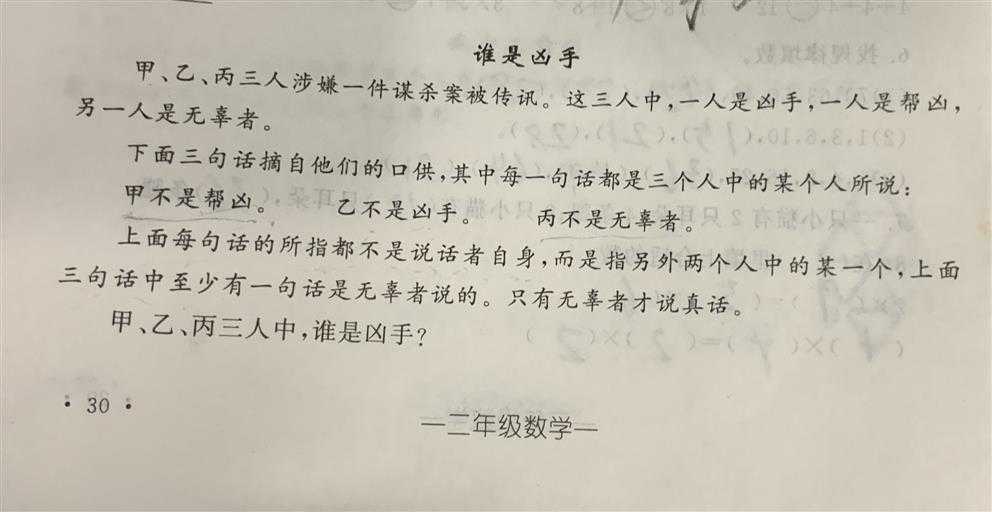编程解决谁是凶手的问题
1 简介
使用代码来解决小学问题,具体题目如下图。

图1 谁是凶手
2 具体实现
主要在于条件判断。每句话所指的都不是说话者自身;只有无辜者说真话,并且至少有一句话是无辜者说的。
(defn permutations "计算排列" [s] (lazy-seq (if (seq (rest s)) (apply concat (for [x s] (map #(cons x %) (permutations (remove #{x} s))))) [s]))) (permutations [1 2 3]) ;; => ((1 2 3) (1 3 2) (2 1 3) (2 3 1) (3 1 2) (3 2 1)) ;; 所有可能结果的集合 (def results (map zipmap (cycle [guys]) (permutations [:凶手 :帮凶 :无辜者]))) ;; 要检测的语句 (def exps {:甲 #(not= (:甲 %) :帮凶) :乙 #(not= (:乙 %) :凶手) :丙 #(not= (:丙 %) :无辜者)}) (def guys (set (keys exps))) (doseq [r results] (let [good-guy (:无辜者 (clojure.set/map-invert r))] ;;找到正确答案的条件 (when (and (not ((exps good-guy) r)) ;; 只有无辜者说真话,因此关于无辜者自己的话(另外的人说的)必须为假 (some #(% r) (->> (disj guys good-guy) (select-keys exps) vals)) ;; 与无辜者不相关的话至少有一个为真 ) (println "result:" r "\n" "甲不是帮凶:" ((:甲 exps) r) "\n" "乙不是凶手:" ((:乙 exps) r) "\n" "丙不是无辜者:" ((:丙 exps) r)))))
result: {:乙 :帮凶, :甲 :凶手, :丙 :无辜者}
甲不是帮凶: true
乙不是凶手: true
丙不是无辜者: false
nil
